In the middle of the Port of Antwerp, in Belgium, surrounded by an endless sea of shipping containers, stands an old church tower on a small patch of grass. Out of place and out of time, this centuries-old tower in the middle of a modern container port is all that remains of the former village of Wilmarsdonk that was wiped away in the 1960s, along with three others, to make way for the expansion of the port.
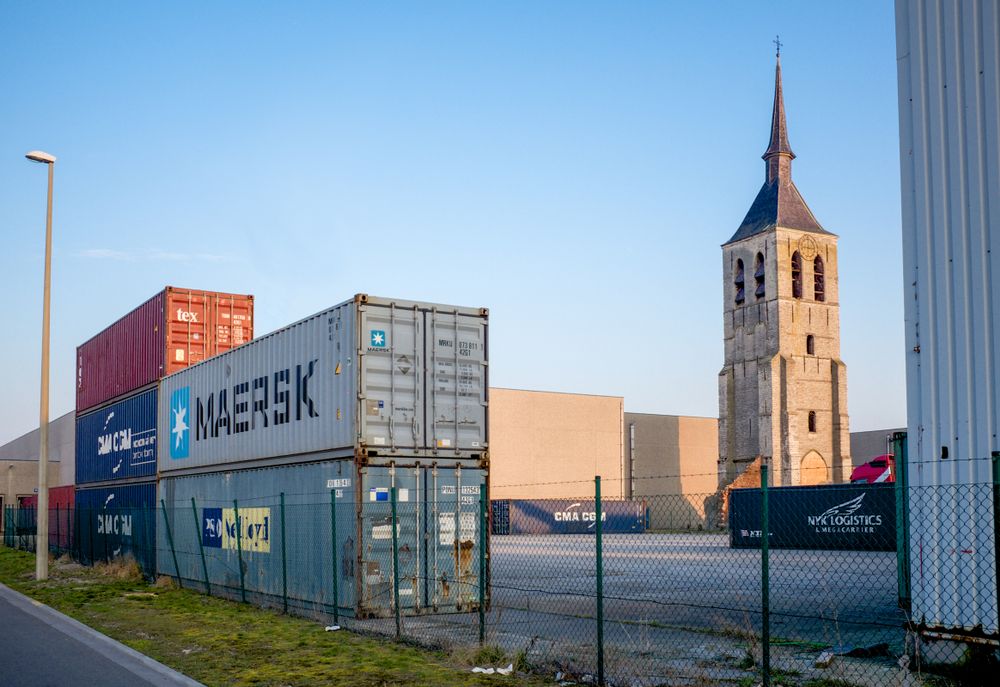
The tower of the St. Laurence church of Wilmarsdonk standing in the middle of the busy Port of Antwerp. Photo: Erik AJV/Shutterstock.com
Wilmarsdonk was first mentioned in the year 1155. In the early middle-ages, it was merely a large piece of land belonging to the St Michaels Abby, before it became a polder village, north of the city of Antwerp. A polder is a low-lying tract of land reclaimed from a natural body of water, such as a lake or the seabed. In the past, this region used to suffer from flooding by the sea, but dikes and sluices now protect the land from tidal erosion. Geographically known as Flanders, this vast region encompassing the Low Countries is agriculturally fertile and densely populated.
Antwerp has had a port since at least the 12th century, but the modern port started with the construction of the first lock by Napoleon Bonaparte in 1811. This was followed by a second and third lock in quick succession. The locks kept the tides away preventing ships and boats from rocking up and down, as it did in medieval times, facilitating easier loading and unloading of goods.
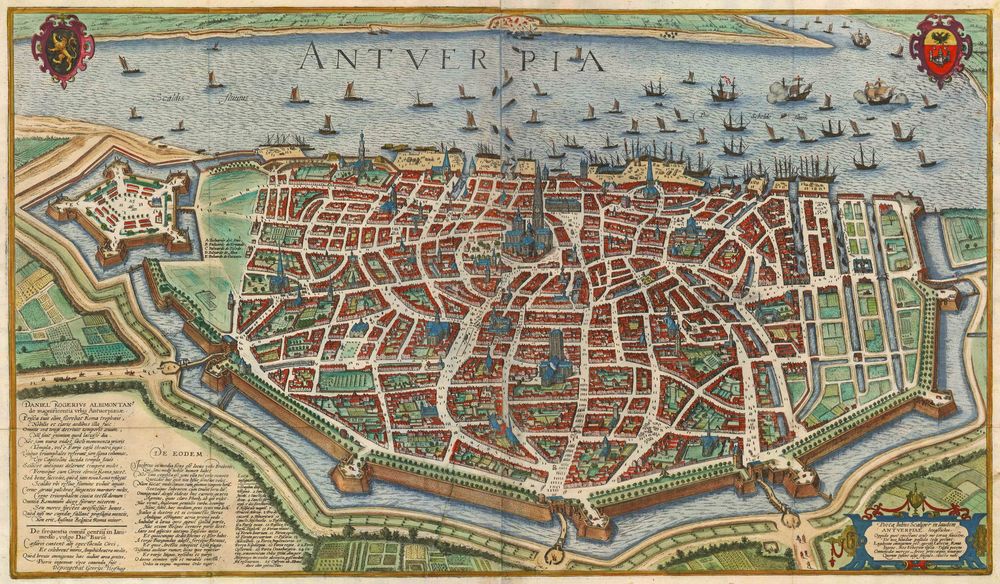
Antwerp in the 17th century.
In 1843, the Port of Antwerp was connected to the Port of Cologne by a railway line creating the first cross-border rail link between Belgium and Germany. In 1859, the Kattendijk lock was completed, which provided the impetus for the development of a new port section. By 1870, eight new docks were added to the port, and export cargoes increased six-fold. In 1879, the all important Iron Rhine Railway to the Ruhr was finished, and the port got a direct rail connection with the German hinterland. From the 1870s the Antwerp port underwent tremendous growth in the volume of cargo it handled. The Second Industrial Revolution was in full swing, and new shipping techniques made it possible to connect with Asia and Africa. Antwerp’s unique location 80 kilometers inland was also a huge strength, as it put the port close to the big production center and millions of customers.
The Port of Antwerp’s size, capacity, and cargo volume continued to grow as the world entered the 20th century. Quays were extended, new docks were excavated, and more locks were added. By 1929, the Port of Antwerp covered 300 hectares, contained 36 kilometers of quays, and handled over 26 million tons of cargo.

The old village of Wilmarsdonk. Photo: Wikimedia Commons

The old village of Wilmarsdonk in 1899. Photo: Wikimedia Commons
In 1956, the Belgian government launched a massive expansion and modernization program with the construction of industrial complexes and new and larger docks. As the port grew it swallowed up villages on the banks of the River Scheldt. The village of Lillo was the first to go. Now squeezed between the Scheldt and the petrochemical complexes, where the village once stood, now stands a 16th century military fort built by William the Silent to defend Antwerp. Within the fort there is a small village of about forty residents. They have their own mini harbor.
The villages of Oorderen and Oosterweel followed next. The former parish church of Oosterweel still stands at its original location while the rest of the village disappeared. The village of Oorderen is completely gone, the only thing left is a barn that has been moved to the Bokrijk open air museum for folklore about 100 kilometers away. Wilmarsdonk was the last village to be demolished. The church tower was spared as it was the oldest and most architecturally significant piece.
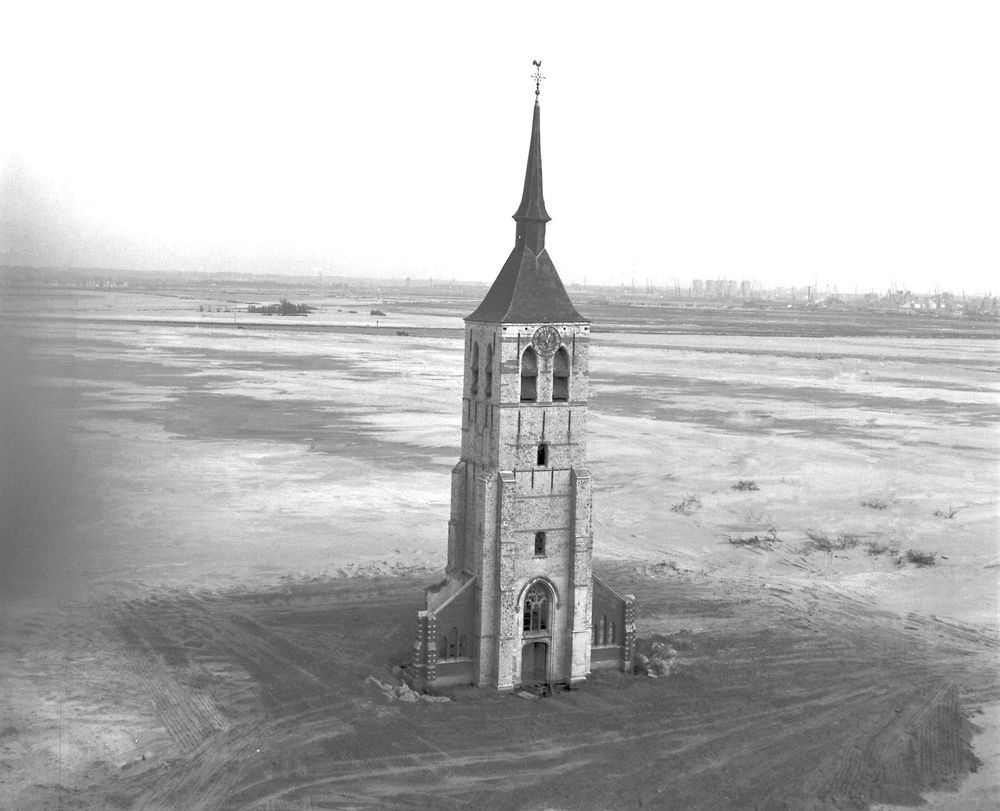
The church tower of Wilmarsdonk in 1965, after the village was completely removed. Photo: Port of Antwerp
It is impressive to see these cultural relics preserved within one of the busiest ports in Europe. Some of them, particularly the tower of the St. Laurence church of Wilmarsdonk in the heart of the harbour, has become a monument connecting the past with the future, and a symbol of the continued progress for which the Port of Antwerp is known.

The church tower of Wilmarsdonk in the middle of the harbour. Photo: Google Maps

The village of Wilmarsdonk demolished for the expansion of the Port of Antwerp. Photo: Wikimedia Commons
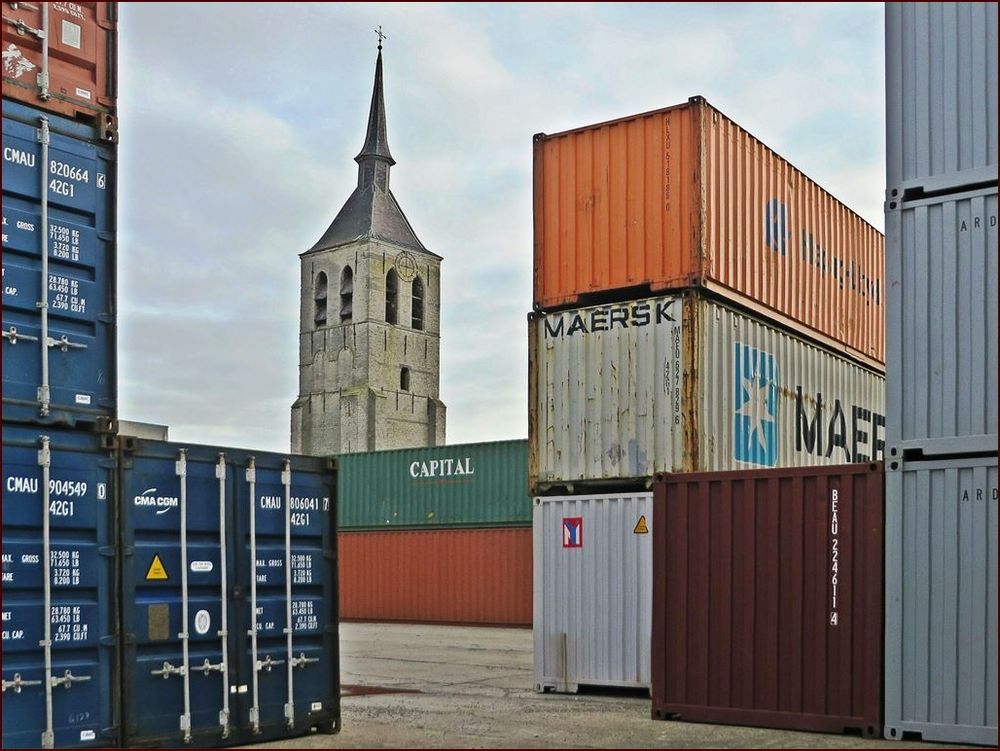
Photo: annahelena
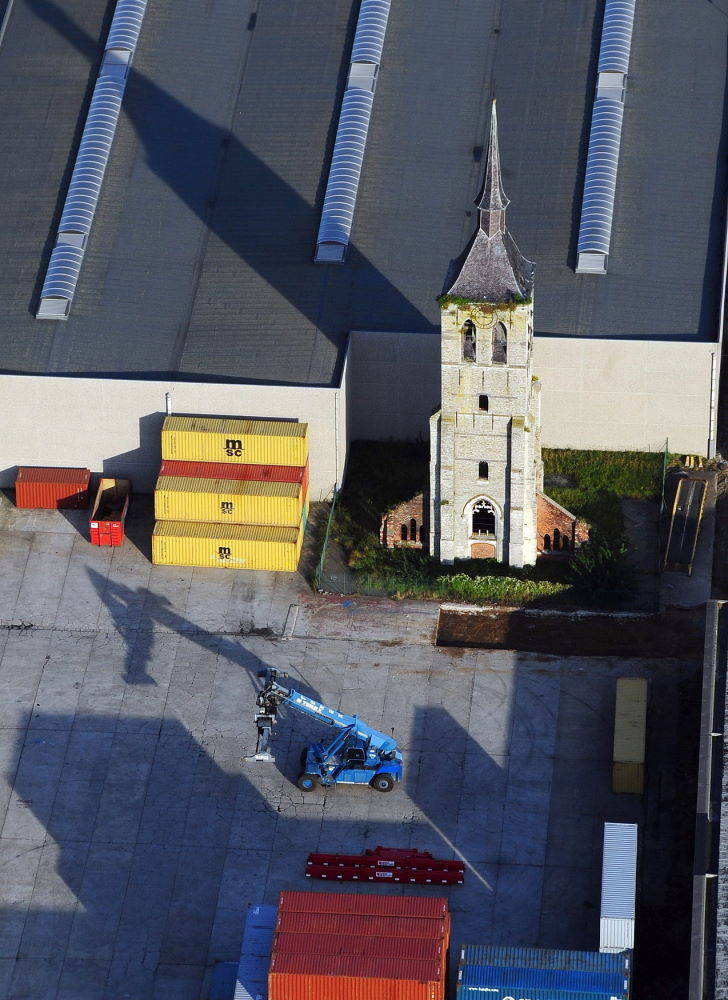
Photo: Port of Antwerp
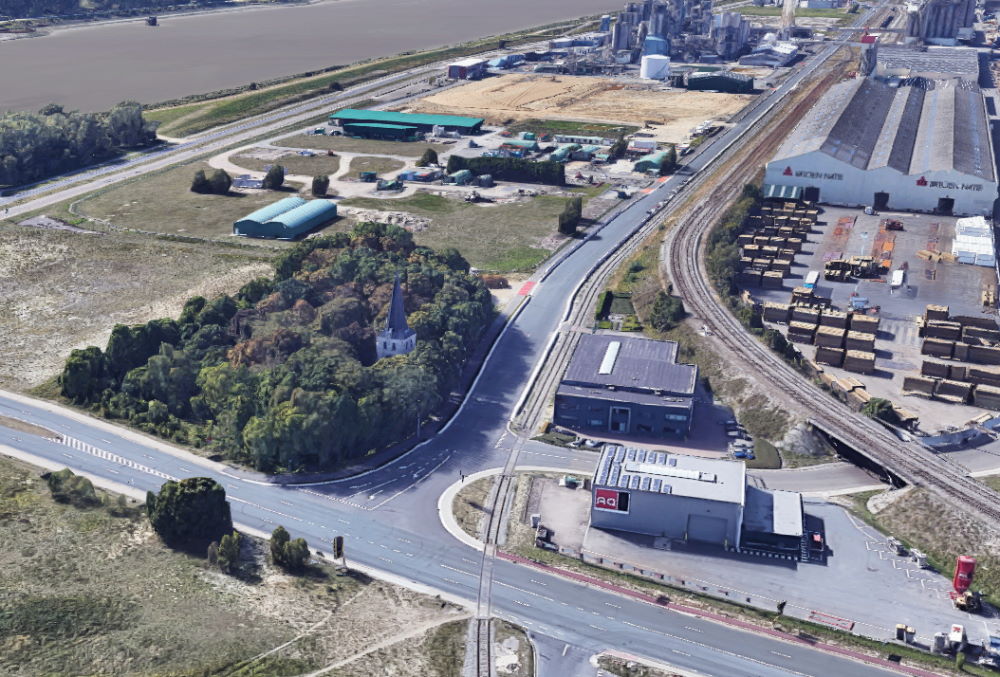
The church of Oosterweel. Photo: Google Maps

Fort Lillo by River Scheldt. Photo: sigmaplan.be
References:
# Jennifer E. Cooper, How Antwerp’s Port Grew Around A Church Tower, Uncube
# How did Port of Antwerp become the largest in Europe geographically?, portofantwerp.com
# Port of Antwerp - Review and History, World Port Source
# The lost villages of the Port of Antwerp, Amazing Belgium



Comments
Post a Comment